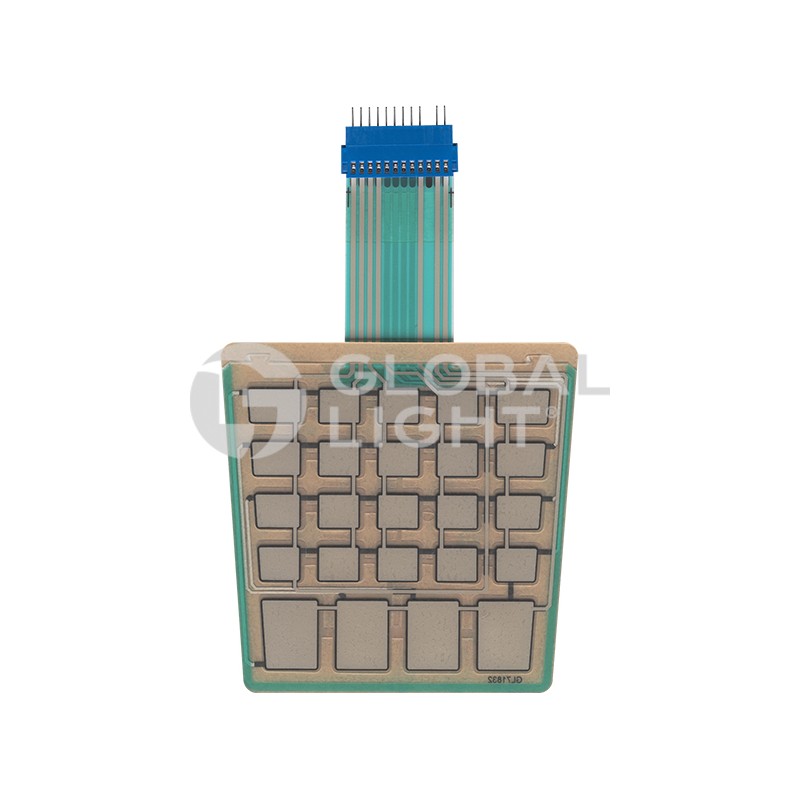Top Features to Look for in a High-Quality Membrane Switch
Top Features to Look for in a High-Quality Membrane Switch
Blog Article
Recognizing Membrane Switches: The Key to Sturdy and Reliable Controls

What Are Membrane Layer Switches?
Membrane buttons are an advanced solution in the world of individual interface innovation, incorporating functionality and design perfectly. These gadgets offer as a user interface in between users and electronic systems, integrating several parts into a portable format. Usually created from versatile, thin layers of materials, membrane switches are made to reply to touch, making it possible for users to connect with machinery and electronic tools successfully.
The primary components of a membrane button include a published circuit layer, graphic overlay, and a spacer layer that stops unplanned activation. The graphic overlay can be personalized to show brand identity or individual choices, enhancing visual appeals while guaranteeing usability. Membrane layer switches are commonly utilized in various applications, consisting of clinical tools, customer electronics, and industrial equipment, owing to their durability and resistance to ecological factors such as moisture and dirt.
One of the essential advantages of membrane switches is their ability to withstand deterioration, making them ideal for high-traffic atmospheres. In addition, they are lightweight and require very little room, enabling cutting-edge layouts in item development. Generally, membrane switches over represent a efficient and functional option for modern-day digital interfaces, marrying innovation with user-centric design concepts.
Just How Membrane Layer Switches Work
The operation of membrane changes depend upon a basic yet effective device that translates customer input into electronic signals. These buttons contain numerous layers, usually including a graphic overlay, a spacer layer, and a circuit layer. When an individual presses the switch, the leading layer flaws, allowing a conductive aspect in the circuit layer to make contact with an equivalent conductive pad on the bottom of the graphic overlay. This get in touch with shuts the circuit and sends an electronic signal to the tool, indicating that the button has been triggered.
The design of membrane switches can differ, yet they often incorporate domes or responsive elements to provide comments to the user, boosting the total experience - membrane switch. The products made use of in membrane layer switches, such as polyester or polycarbonate, add to their toughness and resistance to environmental factors, consisting of dampness and dirt. The published circuits are normally enveloped, which shields them from wear and tear over time.
Benefits of Membrane Switches

In addition, membrane layer switches are understood for their longevity. Created from robust products, they are resistant to dirt, dampness, and physical wear, which significantly expands their lifespan compared to traditional mechanical switches. This sturdiness makes them particularly suitable for high-traffic environments and applications calling for long life.
One more considerable benefit is the convenience of cleansing and maintenance. The smooth surface of membrane layer changes minimizes dust build-up and is frequently impervious to spills, making them suitable for settings that need regular sanitization.
Moreover, membrane layer switches offer a structured profile, leading to a thinner style that can be integrated into different gadgets without adding mass. This feature not only boosts the aesthetic allure yet also adds to a much more ergonomic item style.
Applications of Membrane Switches
Straightforward and versatile, membrane buttons find applications throughout a vast array of sectors, including clinical devices, consumer electronic devices, and industrial devices. In the clinical area, these switches are integral to devices such as analysis tools, patient surveillance systems, and mixture pumps, where reliability and ease of cleaning are crucial. Their capability to stand up to extreme atmospheres and keep functionality makes them excellent for such applications.

In customer electronic devices, membrane switches are made use of in items like microwaves, washing devices, and remote controls - membrane switch. Their sleek layout permits user-friendly customer interfaces, enhancing the total user experience while providing sturdiness and resistance to tear and put on
Industrial tools also takes advantage of membrane layer buttons, particularly in control panels for machinery and automation systems. These switches offer protection against dirt and moisture, ensuring consistent efficiency in difficult atmospheres. Additionally, their customizable features permit suppliers to tailor them to particular functional needs, enhancing effectiveness and performance.
Picking the Right Membrane Layer Change
When selecting a membrane button, it is vital to consider different aspects that influence performance and viability for particular applications. The primary considerations consist of ecological problems, tactile feedback, resilience, and style specs.
First, analyze the operating setting; buttons subjected to dampness, chemicals, or extreme temperature levels need certain products to make certain long life and performance. Next, review the demand for tactile responses. Depending my review here upon user interaction, some applications might gain from a tactile response to verify activation, while others may prefer a non-tactile layout for visual factors.
Longevity is view it now an additional essential element; membrane layer switches need to be developed to endure frequent usage, impacts, and abrasion. Make certain the selected button can withstand the expected lifecycle, specifically in high-usage scenarios.

Final Thought
In conclusion, membrane layer changes serve as crucial components in the style of dependable and resilient control systems throughout different sectors. The convenience of membrane layer switches over allows for tailored services that meet particular operational requirements, enhancing their importance in modern innovation.
Membrane switches represent an important element of modern-day user interface layout, mixing functionality with resilience in numerous applications.Membrane layer buttons are an advanced service in the realm of customer interface innovation, combining functionality and layout flawlessly. Normally built from flexible, slim layers of materials, membrane switches are created to respond to touch, enabling individuals to communicate with equipment and electronic gadgets effectively.
The style of membrane buttons can differ, however they often include domes or responsive aspects to give responses to the individual, improving the general experience.In final thought, membrane switches over serve as vital components in the style of trusted and long lasting his comment is here control systems across numerous industries.
Report this page